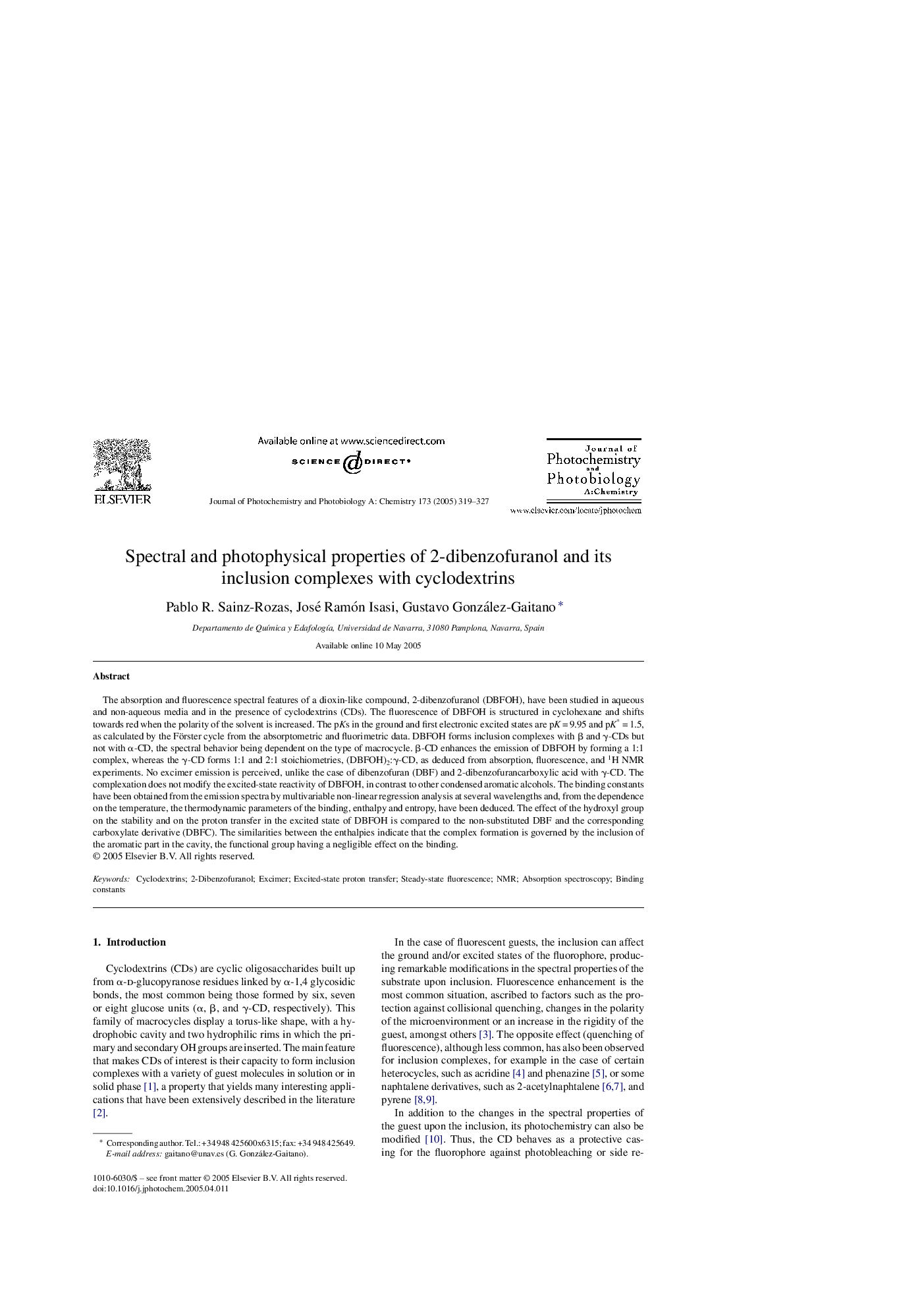| Article ID | Journal | Published Year | Pages | File Type |
|---|---|---|---|---|
| 9605552 | Journal of Photochemistry and Photobiology A: Chemistry | 2005 | 9 Pages |
Abstract
The absorption and fluorescence spectral features of a dioxin-like compound, 2-dibenzofuranol (DBFOH), have been studied in aqueous and non-aqueous media and in the presence of cyclodextrins (CDs). The fluorescence of DBFOH is structured in cyclohexane and shifts towards red when the polarity of the solvent is increased. The pKs in the ground and first electronic excited states are pK = 9.95 and pK* = 1.5, as calculated by the Förster cycle from the absorptometric and fluorimetric data. DBFOH forms inclusion complexes with β and γ-CDs but not with α-CD, the spectral behavior being dependent on the type of macrocycle. β-CD enhances the emission of DBFOH by forming a 1:1 complex, whereas the γ-CD forms 1:1 and 2:1 stoichiometries, (DBFOH)2:γ-CD, as deduced from absorption, fluorescence, and 1H NMR experiments. No excimer emission is perceived, unlike the case of dibenzofuran (DBF) and 2-dibenzofurancarboxylic acid with γ-CD. The complexation does not modify the excited-state reactivity of DBFOH, in contrast to other condensed aromatic alcohols. The binding constants have been obtained from the emission spectra by multivariable non-linear regression analysis at several wavelengths and, from the dependence on the temperature, the thermodynamic parameters of the binding, enthalpy and entropy, have been deduced. The effect of the hydroxyl group on the stability and on the proton transfer in the excited state of DBFOH is compared to the non-substituted DBF and the corresponding carboxylate derivative (DBFC). The similarities between the enthalpies indicate that the complex formation is governed by the inclusion of the aromatic part in the cavity, the functional group having a negligible effect on the binding.
Keywords
Related Topics
Physical Sciences and Engineering
Chemical Engineering
Bioengineering
Authors
Pablo R. Sainz-Rozas, José Ramón Isasi, Gustavo González-Gaitano,
